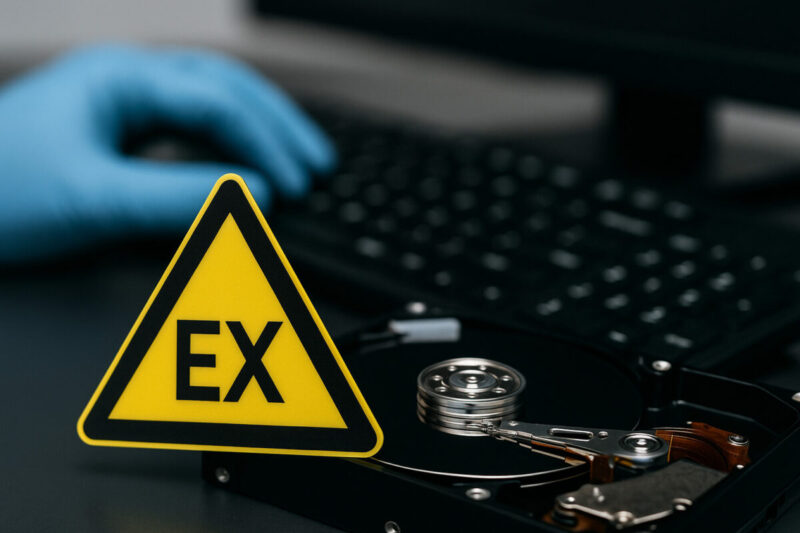Data Breach Risk Management: Protecting Your Organization Beyond the Firewall
The Overlooked Data Breach Risk
By 2025, most businesses have fortified their defenses against ransomware, phishing scams, and insider threats. Yet, one major vulnerability continues to be underestimated: improperly handled retired IT assets.
Backup tapes, servers, and storage arrays may seem harmless once decommissioned, but if not sanitized according to NIST 800-88 standards, they can become the source of catastrophic data breaches. Data breach risk management is no longer limited to firewalls and software patches—it extends to the entire data lifecycle, including the media stored in forgotten closets or auctioned without proper destruction.
What Is Data Breach Risk Management in 2025?
Data breach risk management is the structured practice of identifying, preventing, and mitigating the risk of unauthorized access to sensitive data.
In 2025, the definition has expanded. It now covers not just active IT systems but also retired storage media such as LTO and 3592 tapes, hard drives, and SSDs. If sensitive data is recoverable, even from outdated or offline storage, it represents a real compliance and reputational threat.
Key components include:
-
Asset Identification – Locate every data-bearing device, including archived or unused ones.
-
NIST-Compliant Sanitization – Use industry-recognized methods (clear, purge, destroy).
-
Chain of Custody – Track each asset from storage through destruction.
-
Compliance Documentation – Maintain certificates of sanitization or destruction to prove due diligence.
Expert Insight: Regulators will often assume non-compliance if an organization cannot produce proper audit records.

The Cost of Skipping Secure Media Sanitization
Some businesses dismiss old backup data as irrelevant. Cybercriminals don’t.
Consequences of neglecting sanitization include:
-
Regulatory fines – HIPAA, PCI-DSS, and GDPR penalties often exceed millions.
-
Public breach disclosures – Mandatory notifications damage brand reputation.
-
Contract losses – Non-compliance can void vendor or government contracts.
-
Civil lawsuits – Legal claims from customers or partners impacted by data loss.
-
Brand damage – Loss of trust can take years—and millions—to repair.
Case Example: In 2023, a Fortune 500 financial institution auctioned off LTO tapes without wiping them. The tapes contained sensitive client records. The fallout included a $4.2 million settlement, loss of key contracts, and an extended compliance audit.
NIST 800-88 Rev. 1: The Gold Standard in Media Sanitization
The NIST Special Publication 800-88 Rev. 1 defines how organizations must sanitize data-bearing assets:
-
Clear – Overwrite data to allow reuse.
-
Purge – Use degaussing or cryptographic erasure.
-
Destroy – Physically render the media unusable (shredding, pulverizing, incineration).
For LTO and 3592 tapes, best practices include:
-
Overwrite verification before reuse or resale.
-
Shredding to NIST particle size standards for end-of-life tapes.
-
Avoiding degaussing for modern tapes that require servo tracks to function.
Common Myths About Tape Sanitization
-
Myth 1: A quick format is enough.
Truth: Formatting only erases the file system, not the underlying data. -
Myth 2: Shredding alone guarantees security.
Truth: If shred sizes are too large, data fragments can still be recovered. -
Myth 3: Air-gapped tapes are invulnerable.
Truth: Airgap protects against online threats, but stolen or mishandled tapes remain a risk.
Real-World Breach Examples
-
Healthcare Breach: A regional hospital recycled tapes without wiping them. Patient records surfaced in a thrift store. Result: $1.2M HIPAA fine.
-
Government Contractor Breach: Classified data leaked after unsanitized tapes were sold to a recycler. Result: contract termination and federal investigation.
These incidents show why certified destruction and verifiable documentation are essential.

Building a Strong Data Breach Risk Management Plan
To safeguard your business in 2025, follow this five-step framework:
-
Audit – Identify all data-bearing assets.
-
Classify – Decide which to reuse, resell, or destroy.
-
Sanitize – Follow NIST 800-88 guidelines.
-
Verify – Confirm erasure or destruction effectiveness.
-
Document – Retain certificates of destruction or sanitization.
Why Partnering with Experts Matters
Cutting corners with low-cost recyclers or uncertified destruction services creates unnecessary risks. A secure partner should:
-
Provide chain-of-custody tracking.
-
Deliver audit-ready certificates of destruction.
-
Use equipment that meets NIST particle size requirements for shredding.
Don’t Gamble With Data Security
Data breach risk management is no longer just an IT issue—it’s a business survival issue. Your firewall may stop hackers, but mishandled retired assets can undo years of cybersecurity investment in a single incident.
Action Step: Secure your legacy tapes, drives, and servers today. At WeBuyUsedITequipment.net, we provide NIST-compliant data destruction and certified sanitization services that safeguard your business from hidden threats.
👉 Request a free data security assessment today and take control of your organization’s data breach risk management strategy.







